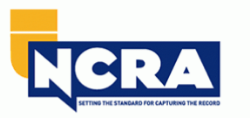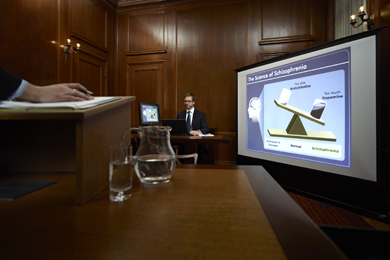Trial Presentation High-Quality Solutions for Courtroom Presentations
Wiki Article
Captivate the Court: Essential Components of a Powerful Trial Discussion
Crucial components such as understanding the audience, crafting an engaging narrative, and grasping spoken and non-verbal interaction are crucial components of an efficient discussion. As these aspects intertwine, they form a natural technique that not just educates but also engages jurors on several levels.
Recognizing Your Audience
Recognizing your audience is a crucial aspect of efficient trial discussion. A successful discussion rests on the capacity to comprehend the demographics, worths, and predispositions of jurors. This understanding educates just how debates are framed, proof exists, and sob stories are crafted, guaranteeing that the message reverberates with the jurors on an individual degree.Study indicates that jurors originated from varied histories and may have varying degrees of comprehending relating to lawful proceedings (trial presentation). Thus, it is essential to prevent lawful jargon that might push away or puzzle them. Instead, utilizing clear, relatable language cultivates engagement and comprehension. Additionally, understanding the jurors' potential biases and life experiences enables the trial presenter to anticipate objections and address concerns proactively.
Effective trial discussion additionally includes observing jurors' reactions throughout the procedures. Engaging with jurors as individuals rather than a cumulative unit is vital in promoting a strong link in the court room.

Crafting a Compelling Story
Crafting an engaging story is necessary in leading jurors via the intricacies of a situation. A well-structured story not just streamlines detailed lawful ideas however likewise engages jurors on an emotional degree, making the info a lot more relatable and unforgettable.This message must reverberate with the jurors' worths and experiences, cultivating a connection that goes beyond plain truths. This chronological method can assist jurors comply with the development of occasions, stressing reason and result.
Integrating human components-- such as individual tales or anecdotes-- can further enhance the story's effect. These aspects evoke empathy, allowing jurors to visualize the repercussions of the case on the real worlds. Furthermore, utilizing a regular theme throughout the discussion enhances the main disagreement, making it simpler for jurors to preserve vital points.
Ultimately, a compelling story transforms a test discussion from a plain address of truths into a convincing story that mesmerizes the court, urging them to ponder with both factor and emotion.
Utilizing Visual Help
Including visual help into a trial discussion can considerably boost jurors' understanding and retention of details. Aesthetic materials such as charts, layouts, photos, and videos can transform complicated lawful ideas and evidence into easily digestible layouts. By engaging multiple senses, these aids permit jurors to envision the instance's crucial elements, making it simpler for them to comply with along and grasp complex information.
In addition, properly designed aesthetic aids can highlight crucial points and emphasize relationships between various items of proof. Timelines can effectively show the sequence of events, while annotated images can clear up particular information appropriate to the case. This not only help in understanding however likewise reinforces find this the narrative offered by the lawyer.
Extremely intricate or cluttered visuals may overwhelm jurors and detract from the message. Inevitably, efficient aesthetic interaction can be a powerful device in convincing jurors and assisting them reach notified conclusions.
Understanding Verbal Interaction
Efficient verbal communication is essential in a trial presentation, as it offers as the key ways with which lawyers convey their arguments and attach with jurors. Simplicity in language promotes understanding and aids jurors grasp complicated issues presented during the test.In addition, tone and pacing considerably influence how messages are gotten. A confident tone communicates authority, while suitable pacing permits jurors to take in details without really feeling overwhelmed. Lawyers need to likewise vary their vocal inflections to emphasize bottom lines and keep jurors' interest throughout the presentation.
In addition, the organization of verbal disagreements is vital. Structuring the narrative rationally and coherently assists jurors follow the attorney's logic, making it easier for them to maintain crucial details. Using convincing methods, such as storytelling, can additionally improve the psychological resonance of the disagreements presented, therefore creating a more extensive link with jurors.
Ultimately, understanding verbal interaction not only reinforces an attorney's situation yet additionally promotes trust fund and relationship with the jury, substantially improving the opportunities of a beneficial verdict.

Engaging With Body Language
Nonverbal interaction plays an important function in test presentations, often sharing messages that words alone can not share. Body language, including motions, posture, faces, and eye contact, considerably affects just how jurors view the integrity and sincerity of the speaker. A certain position, with shoulders back and an open stance, can infuse trust, while closed-off body movement might suggest defensiveness or unpredictability.
Face expressions ought to mirror the feelings related to the situation, enhancing the story being provided. A sincere expression throughout an emotional trial presentation moment can evoke compassion and reinforce the emotional allure. Eventually, mastering body language is important for reliable test presentations, as it boosts spoken communication and develops an engaging existence that reverberates with the court.
Verdict
To conclude, astounding the jury requires a strategic strategy that incorporates recognizing the target market, crafting a compelling story, using aesthetic aids, understanding verbal communication, and engaging through body language. Each aspect plays an important duty in creating a powerful test presentation that resonates with jurors on both psychological and intellectual click here for more info degrees (trial presentation). By integrating these elements efficiently, attorneys can substantially enhance their capability to encourage and affect jury decision-makingReport this wiki page